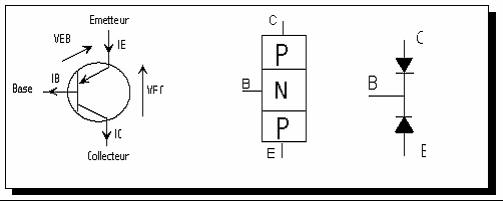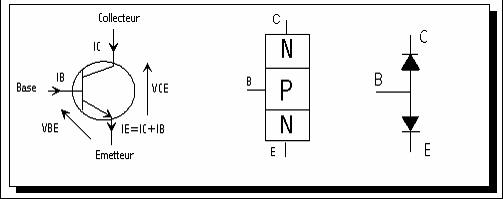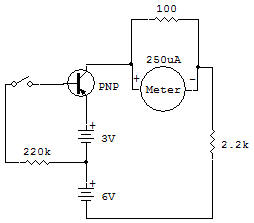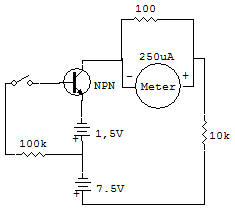
Meet the Transistor
You've heard about transistors for a long time but what are they and how do they work?
This Project will let you find out! Look at the schematic symbol for a transistor.
Definition : for transfer resistor
A transistor is a semiconductor device used to amplify or switch electronic signals and electrical power. It is composed of semiconductor material with at least three terminals for connection to an external circuit. A voltage or current applied to one pair of the transistor's terminals changes the current through another pair of terminals. Because the controlled (output) power can be higher than the controlling (input) power, a transistor can amplify a signal. Today, some transistors are packaged individually, but many more are found embedded in integrated circuits.
Two junctions are the transistor, junctions that can be likened to two diodes (between B-C and B-E) whose meaning depends on the type.
You'll notice that there are three parts: an emitter (the line with the arrow), the base (the heavy vertical line) and the collector (the normal line). You'll notice that some transistors have the emitter's arrow pointing toward the base—these are PNP transistors.

Others have the arrow pointing away from the base, and these are NPN transistors.

We've included two circuits here using both types. (PNP and NPN refer to the internal construction of a transistor—in case you were wondering!)
| Schemas 1 |
Schemas 2 |
 |
 |
Look carefully at schematic 1.
You'll see there are two paths for the current: one from base to emitter and another from the collector to emitter.
The transistor is a PNP type, Notice the base-to emitter path is open until you press the Key.
When you finish wiring the circuit shown in schematic 1, the Meter pointer will not be moving. But press the Key and see what happens. Can you explain what you saw?
The secret to a PNP transistor is that a small change in the current from base to emitter causes a big change in the current flowing from collector to emitter. Here a large current flowed from collector to emitter once you let current flow from base to emitter by pressing the Key.
Schematic 2 shows a similar arrangement using a NPN transistor.
However, with the NPN transistor a small change in the current flowing from emitter to base can make a big change in the current flowing from emitter to collector. (Notice the different current flow directions in PNP and NPN transistors.)
The ability of the emitter/base current to control the collector/emitter current is called amplification. It's just like we took a weak current and made it bigger. Amplification is something transistors do very well indeed!
